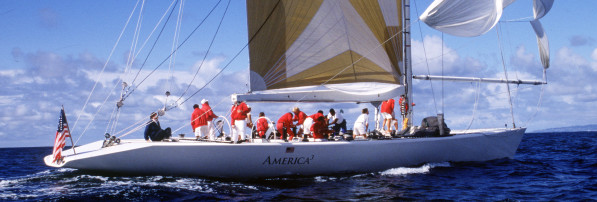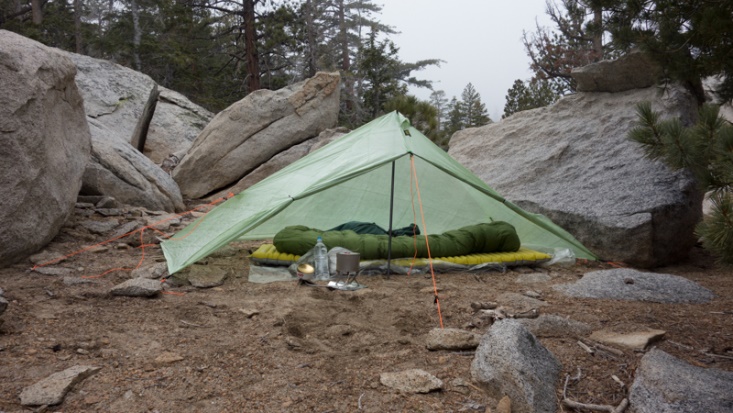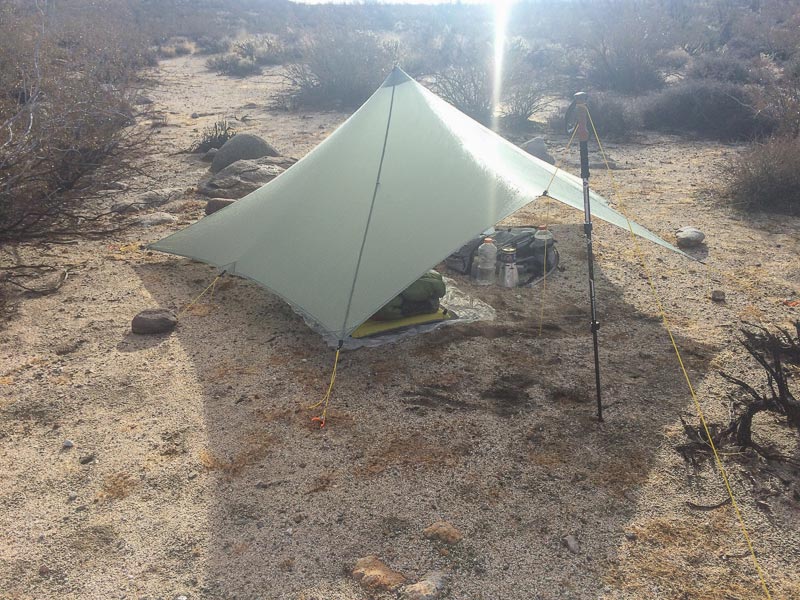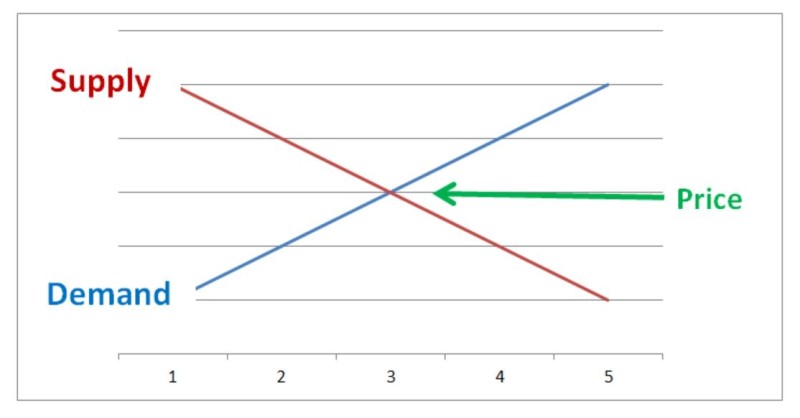A LESSON IN ECONOMICS

I received an email from a friend asking me what I thought about the recent Dyneema – Cuben Fiber debate. I had no idea what he has talking about. He sent me some links to several Websites. It appears there is a lot of controversy and, in some cases, anger among backpackers who are advocates of extremely light gear. The anger is that Cuben Fiber is too expensive and not plentiful enough, and many people want more of it at a cheaper price. Of course no one really needs Cuben Fiber, but like spoiled children they want it. No one in the “anger camp” has identified the root cause of the cost and supply issue. So I am going to clear the air and explain it. First I need to provide some background. I will post some pictures to, hopefully, retain your attention.
DYNEEMA
Dyneema is a fiber manufactured by the Dutch company, DSM. The fiber is made from the polymer, ultra-high-molecular-weight polyethylene. I’m not going to get technical here because I’m not a chemist, but an end user. If you want to delve into the science of Cuben Fiber, then Google is your friend. When Dyneema fibers are woven to make a fabric (Dyneema fabric), it is one of the toughest fabrics known to man. Some common applications include bullet-proof vests and military body armor. The same fiber is manufactured by Honeywell and is called Spectra.
Fabrics made completely from Dyneema are incredibly expensive and are called Full Dyneema (or Full Spectra). It is truly the perfect material to create an almost indestructible backpack, although it is not the lightest material. I only know of 3 companies that make backpacks from this material, and in my opinion, the best is McHale Alpine Packs of Seattle, WA, who is the only one who makes completely custom packs. If you are a backpacker, it is a good bet that you probably have never seen a Full Dyneema or Spectra McHale pack. These custom made packs cost over $1,000 each. However, if you own one it is best to add it to your last Will & Testament because it is going to live longer than you.

If you want to read about my Full Dyneema backpack here is my initial review.
More common, and a very durable fabric, is Dyneema Grid. A grid of Dyneema fibers is woven into a material, such as nylon. Many people, and I have even seen backpack companies, call this Dyneema. But it isn’t Full Dyneema, it is Dyneema Grid. This is just a tidbit of “buyer beware” information.

If you want to read about my Dyneema Grid backpack here is the review.
CUBEN FIBER
Cuben Fiber is a non-woven laminate fabric developed by the Cuben Tech Corporation in the early 90’s for the sails on racing yachts. In 1992 America3 won the America’s Cup Race using sails of Cuben Fiber.
In the mid to late 2000’s a few cottage industry backpacking gear companies started selling shelters and backpacks made from Cuben Fiber. The fabric has high tensile strength and is extremely light. It does have three disadvantages:
- High cost
- Poor abrasion resistance (not a good feature in a backpack)
- It is difficult to work with (meaning few companies know how to build quality products made from Cuben).
In recent years Cuben Tech has manufactured Cuben Fiber that is laminated to more robust materials that make it more suitable for backpacks. Cuben Fiber comes in many weights per ounce, meaning you need to know what you are buying since each weight has different characteristics.
As a generalization, Cuben Fiber shelters and backpacks often cost 2 or 3 times more than products made from nylon or similar materials at a weight savings of maybe 50% in a simple tarp shelter and less in backpacks. Equipment made from Cuben requires more careful use than other materials.
Cuben fiber isn’t for everyone, but I have a few pieces of gear made from Cuben and all have served me well and were worth the expense. I like my Cuben products a lot. My Cuben gear does what I need it to do, but is not critical to my happiness or enjoyment of the backcountry.

zPacks Cuben Fiber Zero Backpack review

zPacks Cuben Fiber Hexamid shelter review

zPacks Cube Fiber Poncho/Groundsheet review

Six Moons Designs Deschutes CF shelter review
Another feature of Cuben is it doesn’t stretch, which makes it easier to get a taunt pitch on a simple shelter. This is a benefit over nylon tarp shelters, which stretch and sag over night.
However with shelters of complex shapes, such as the 5-sided Mountain Laurel Designs Trailstar, a material that stretches is much easier to set up. Because of this I bought a Trailstar made from silnylon instead of Cuben. It weighs almost twice as much as the Cuben version, but cost 60% less.

THE DEBATE
Okay, I have written a bunch about Dyneema and Cuben Fiber. If you are familiar with these materials you know what I am writing about. If not, you might be confused and wondering where I am going with all of this…
Well, last year DSM, the manufacturer of Dyneema bought Cuben Tech, who was the only manufacturer of Cuben Fiber, although their patent for the material has expired.
Recently DSM started a Cuben Fiber Public Relations campaign that included this documentary infomercial
In the video they show products made from both Full Dyneema and Cuben Fiber, but are now calling both materials Dyneema. This has apparently caused a lot of confusion. I know the difference, as do most knowledgable backpackers.
What’s in a Name?
The first thing that has upset some people is that DSM has changed the name from Cuben Fiber to Dyneema Composite Fabrics. This has gotten some folk’s panties in a wad and really made me laugh! Not a lot of people know what Cuben Fiber is, and if they do they will know what Dyneema Composite Fabrics is. I am sure people will start calling it DCF, just as many people call Cuben Fiber, CF. For the rest of this post I will call it DCF.
I don’t know why DSM changed the name. Maybe for legal reasons or perhaps their purchase of Cuben Tech did not include the rights to the name Cuben Fiber. More likely, it seems to me, they wanted to distinguish the product as a DSM brand and Dyneema is a valuable marquee. Anyway, who cares?
Econ 101
Recently, from what I read, DCF has not been easily available to some former Cuben Tech customers and the price has gone up. This has upset many people and I read many comments on why it shouldn’t go up; how the cost of research and development was recouped long ago, that prices on any commodity should go down over time, it is unfair to consumers, blah, blah, blah. Of course no one has mentioned that maybe, just maybe, the purchase of Cuben Tech included more than capital equipment and materials, such as good will or blue sky. I really don’t care, so I didn’t research the particulars of the Cuben Tech buyout.
Here’s an important economic reality and probably one of the most important economic principles, which was first described over 300 years ago by the famous philosopher John Locke,
The price or value of a product or service is established by the relationship between the supply and demand. If demand goes up or the supply decreases, the price goes up. If demand decreases or supply increases, the price goes down. The intersection of supply and demand on a graph determines the price point. Of course this only works in a free market.
Another important concept in Capitalism (a truly free market place) is that a producer or seller of goods and services will charge whatever the market will bear – in other words, they will make as much profit as possible. I support this line of thought, as it is the only moral behavior, which is why John Locke the philosopher was writing about supply and demand.
No, as much profit as possible is not a bad thing. Let’s take DCF as an example. If there is enough demand or profit and a competitor can enter (willing and able) the market place with a similar or better product, they will. Now, we have just increased supply because two companies are manufacturing the same (or similar) product and the price goes down, this is good for the consumer. So let’s say I develop Nick’s CF, which is as good as the Dyneema brand and I sell it for less money. People will start buying it from me, which will force DSM to lower their price. Now both of us are making less profit individually than DSM was making with no competitors. To hit higher profits we both need to start producing and selling more, and when we start producing more product (increasing the supply) we can continue to lower our prices and realize even greater profits. Everyone wins and it encourages more companies to develop similar and better products – this is how Capitalism works.
Maybe for you young’uns this is a better example:
In the late 80’s I bought one of the first computer CD drives. It was a single speed drive and I needed it for my business. Cost? One thousand dollars. Today they can be bought for under $20 and are faster and can even record data. The CD was a great product for computer users, people wanted them, and many companies began producing CD drives.
In the long run it is probably a good thing for consumers that DCF costs more and it harder to get. It will attract competitors. But more important,
backpackers don’t need DCF, CF, Cuben Fiber or whatever you want to call it. People did fine before it was created, and most backpackers don’t have any Cuben gear at all.
If your panties are in a wad over the issue, get over it.
If you have ever taken a course in economics and you don’t understand supply and demand, maximizing profit, and why it is good to sell at what the market can bear, I suggest you go back to your school and demand a refund of your tuition.
If you disagree with these concepts, you might be living in the wrong country, it is one of the main reasons this country was established.
